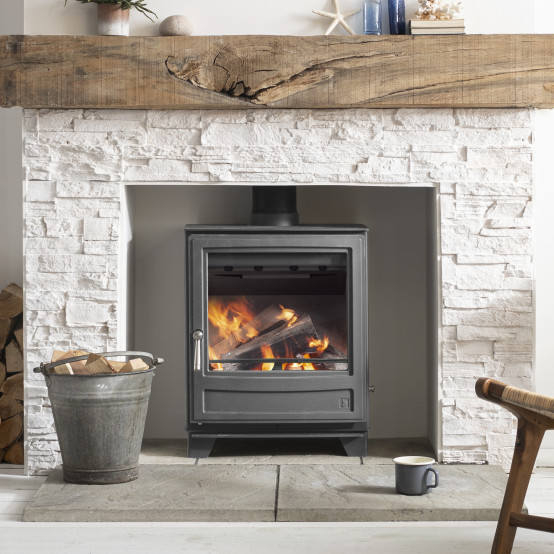Why headlines about wood-burning stove emissions don’t give the full story.

Wood-burning stoves are a convenient, cost-effective and cosy form of heating for many households across the UK.
You’ve probably seen headlines pointing the finger of blame at wood-burning stoves for an increase in air pollution, specifically the ultra-fine particulate matter known as PM2.5, in recent years.
Often an article will discuss the increase in pollutants from “domestic burning” and some what flimsily attribute this to the growing popularity of wood-burning stoves. To do so conveniently overlooks several factors, many of which are examined in the study The Contribution of Outdoor Burning to UK PM Emissions by Dr Josh Cottam and Dr Edward Mitchell.
Let’s take a look at some of the factors that aren’t widely discussed when you hear about wood-burning stove emissions.
Only 27.3% of PM2.5 particles come from domestic combustion
Industrial processing, manufacturing and construction, and a grouping of ‘other’ that includes things like energy and non-road transport, are among the sources of combustion that the UK Government’s figures show create more PM2.5 particles than domestic combustion. That means little more than a quarter of emissions come from residential addresses.
Almost half of domestic combustion is outdoor burning
From the media articles, you’d think that domestic combustion means wood-burning stoves. Not so. In fact, 46% of the PM2.5 particles attributed to domestic combustion are actually created by outdoor burning. Garden bonfires, incinerators, chimineas, fire pits, barbecues and pizza ovens are all included within domestic burning and contribute almost half of the PM2.5 emissions. Given the difficulty in monitoring waste disposal by burning, these figures could be an underestimate.
Open fires emit more than double the PM2.5 particles emitted by wood-burning stoves
Even when we focus on indoor burning, it’s still a stretch to put the blame on wood-burning stoves. More than twice as many PM2.5 particles come from open fires as wood-burning stoves — hardly a result of a surge in the popularity of woodburners. As an illustration of this point, open fires contribute 39% of the emissions from burning of wood logs, while only 26% of wood logs are burned on open fires.
Modern Ecodesign wood-burning stoves contribute just 1.3% of PM2.5 emissions
When you narrow down to the Ecodesign wood-burning stoves that are now sold in the UK, only 1.3% of PM2.5 emissions can be attributed to stoves. For those currently interested in buying a wood-burning stove — something that can be extremely helpful to alleviate fuel poverty amid rising energy costs — there is no context provided about just how small a percentage of the figures being mentioned comes from the latest generation of stoves.
See more Ecodesign stoves
If you’d like to take a closer look at low-emission Ecodesign stoves, you can see our full range here.



